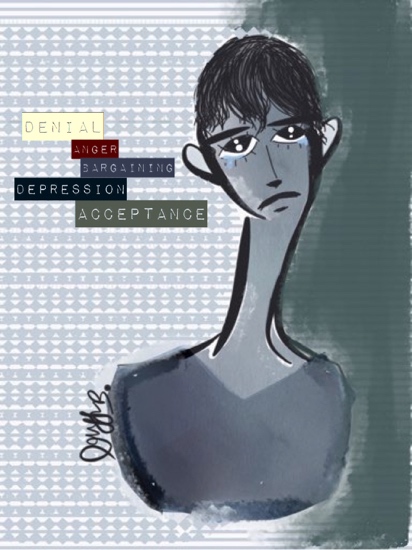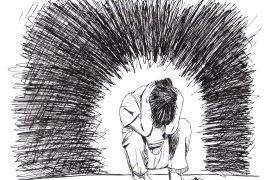Funeral traditions and the consoling days and their one size fit all approach may not work for everyone.

Every beginning must have an end, and as such, so does the circle of life. Every life comes to an end as death does not escape anyone. It comes at varying times, a little too early for some, and never gives enough time or notice. People would rather avoid discussing this part of the life cycle, and instead, they wish one another a lifetime of a hundred years or more. However, just as every beginning must have an end, every end also has its beginning.
When death falls upon us, the ones closest to the deceased must also go through their own cycle – a cycle of grief. The griever is faced with a new set of emotions that they must feel and understand to be able to carry on living and reach what will be their new beginning. The Swiss Psychiatrist, Elisabeth Kubler-Ross, shared her views on dealing with grief in her book “On Death and Dying” published in 1969. She identified five stages that an individual must go through and they are as follows: Denial, Anger, Bargaining, Depression, and finally, Acceptance.
While people may experience only some of these stages, or perhaps in a different order, it is important to allow these emotions to be felt to reach closure and gain acceptance of the new way of life without their loved ones in it. However, I wonder, in this collective society where people all come together to console at the time of death, do we allow the griever to truly experience these stages? And if not, what happens to that individual’s emotions?
In our culture, when there is death, people from far and beyond come together to visit the grieving family. They come armed with good wishes and prayers, offering sympathy, or simply paying their respects out of a formality. It can be very calming for the griever to be surrounded by friends and family, and having company may ease some pain at such a difficult time, but I wonder, for those that have different ways of dealing with grief, or prefer their solitude, are they given that space? Or do they also need to maintain tradition and be present throughout the funeral and the consoling period, which is held over a period of three days beginning immediately upon burying the deceased? During these three days, the griever is also a host who has to maintain decorum and hospitality to ensure that the visitors are being taken care of and are well fed. It becomes an open house for people to come and go throughout the day while many continue their visits even after the three days are completed. It, therefore, can be another ritual that must be fulfilled to meet the needs of society and not the ones affected by this tragedy.
It is also not uncommon for family members to stay the night in the house of the deceased to keep the grievers company, as if to protect them from loneliness. But could such acts of over-generosity actually be suffocating to those who would rather find solace and peace in their solitude?
Being faced with death is certainly never easy for anyone, and having a full house can help fill the absence of the deceased and ease the pain of separation and loneliness, but it is also important to understand what the family truly needs and wants in this time of grief and despair, instead of simply following a standard custom. For those that may have a different way of grieving but are not given a chance, they may simply have to put their feelings on hold until the official mourning period is over. And that does not seem very compassionate to me. Everyone deserves to have their own time and space to deal with such a life changing event. Will there be a day where our culture allows people to grieve in a way that is right for them?



